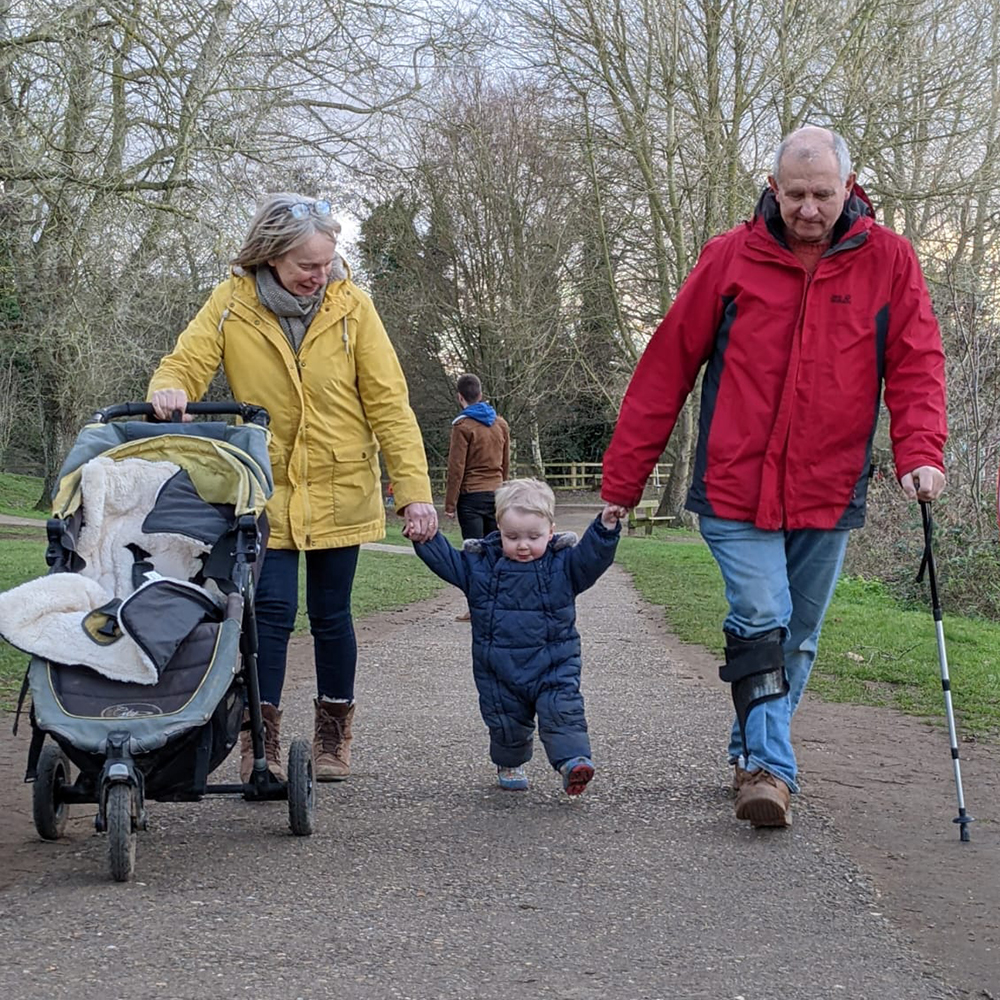
Rob walking with grandchild in his new Neuroswing AFO
14 February 2022
By the time Rob came in to see us, he felt he was running out of options. Following years of problems with his back, he was diagnosed with Peripheral Neuropathy; this had caused drop foot and the muscles in his right leg were beginning to waste and his ankle was becoming increasingly unstable. He had tried rigid and soft AFOs, but nothing seemed to be able to help him regain his mobility.
In order to find a solution, he started searching the internet and found a video of one of LOC’s patients who had had a serious car crash a decade ago and as a result, could not walk unaided, that is until he became a LOC patient. Rob had been looking for an orthosis that would help him walk normally again and encouraged by the video he booked a consultation at LOC.
Rob was seen by one of our senior orthotists:
LOC recommends the Neuro Swing ankle joint system for patients who have the potential to regain function, it enables us to return a patient’s gait pattern to as near normal as possible. At LOC we also have the advantage of being able to fine-tune it in our Gait Lab at our Kingston clinic.
After his fitting in September Rob was jubilant:
Drop foot (also known as dropped foot, foot drop or floppy foot) refers to a weakening of those muscles that allow the ankle and toes to flex, causing difficulty in moving the ankle and toes upwards (dorsiflexion). This causes the individual to drag their toes while walking and to compensate by bending the knee and hip to lift the foot higher than usual, to prevent it from catching on the ground during the swing phase.
Assessment for drop foot requires a full biomechanical assessment. This includes: assessing joint ranges of movement; joint stability; muscle strength; standing posture and alignment; and a gait/walking assessment.
We have the following facilities and amenities at our Kingston Upon Thames location:
We also have the Gait Laboratory for orthotics patients and Onsite Manufacturing for speedy turnarounds and adjustments whilst you wait.
We have the following facilities and amenities at our Cambridge location:
We have the following facilities and amenities at our Bristol location:
For more information, visit Litfield House Medical Centre.
LOC’s clinic is based in the University of Salford’s Podiatry Department and provides treatments for orthotics, scoliosis, pectus deformities, positional plagiocephaly and club foot.
It is also the base for LOC’s northern OSKAR clinic which is run by Sam Walmsley, clinical director of LOC, in conjunction with Elaine Owen MBE MSc SRP MCSP.
Please take a look at our AFOs designed to treat drop foot. Take a look at our bespoke orthotics to get a broader understanding as to what LOC offer, or contact LOC directly.